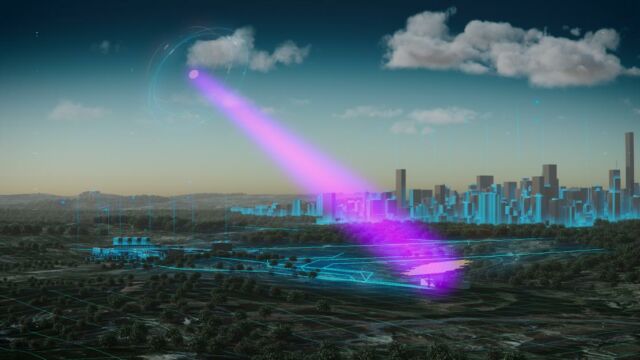Solar power gathered far away in space, seen here being transmitted wirelessly down to Earth to wherever it is needed.
ESA plans to investigate key technologies needed to make Space-Based Solar Power a working reality through its SOLARIS initiative. One such technology – wireless power transmission – was recently demonstrated in Germany to an audience of decision makers from business and government.
The demonstration took place at Airbus’ X-Works Innovation Factory in Munich. Using microwave beaming, green energy was transmitted between two points representing ‘Space’ and ‘Earth’ over a distance of 36 meters.
The received power was used to light up a model city and produce green hydrogen by splitting water. It even served to produce the world’s first wirelessly cooled 0% alcohol beer in a fridge before being served to the watching audience.
For a working version of a Space-Based Solar Power system, solar power satellites in geostationary orbit would harvest sunlight on a permanent 24/7 basis then convert it into low-power density microwaves to safely beam down to receiver stations on Earth. The physics involved means that these satellites would have to be large, on the order of several kilometers in size, to generate the equivalent power of a typical nuclear power station. The same would be true for the collecting ‘rectennas’ down on Earth’s surface.
Image credit ESA






Leave A Comment